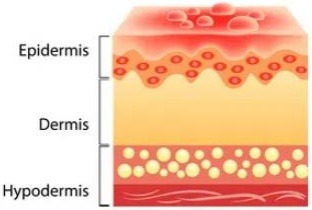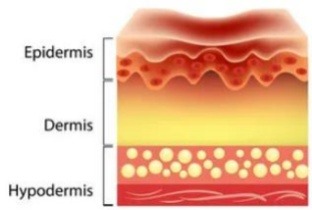Burn and their type
A damage to the skin or other tissues known as a burn can be caused on by heat, electricity, chemicals, friction, or radiation.
What is Burn?
A damage to the skin or other tissues known as a burn can be caused on by heat, electricity, chemicals, friction, or radiation. The heat from hot liquids, solids, or flames is the main cause of burns. One of the most frequent injuries in the home is burns, especially for kids. Burns are defined by significant skin injury that results in the death of the impacted skin cells.
Couses
- Thermal burns-fire is the primary cause of most burns, they are referred to as flame burns. Skin and tissue can be directly injured by flame contact. A burn is damage to the skin caused on by a hot liquid, hot object. Burns from cigarettes, irons, or cooking equipment are a few examples.
- A friction burn- occurs when skin is partially removed by a hard item. It’s a heat burn as well as an abrasion (scrape). Accidents involving motorcycles and bikes frequently involve these.
- Cold burns-When exposed to extremely low temperatures, frostbite is a skin injury that results in the freezing of the skin or other tissues. Frostbite most frequently affects the hands and feet.
- Radiation burns-UV rays, which are emitted by the sun or a tanning bed, can induce sunburn by damaging the skin.
- Electrical Burns-Electric currents are what create electrical burns. These burns are typically exceedingly deep and may seriously harm both the skin and the tissue beneath it.
- Chemical burns-can result by coming into contact with combustible gases or liquids. The upper airways may become damaged from inhaling hot gases, making breathing difficult.
Type of Burns
FIRST DEGREE
Involve the epidermis, the skin’s outermost layer. These burns are typically characterised by redness, tenderness or pain, and swelling. Typically, there is no blistering. Within a week, full recovery normally takes place, frequently accompanied by peeling and occasionally by brief, slight changes in skin tone. First-degree burns frequently result from excessive sun exposure or coming into contact with a hot object.

SECOND DEGREE
Include injury to the dermis, the skin’s second layer. These excruciating burns appear pink, wet, and soft. The skin may exude fluid and blisters may develop. These burns could take anywhere between 2 and 6 weeks to heal, depending on how much the dermis is injured. Scarring could happen. Such burns frequently result from severe burns and intense UV exposure.

THIRD DEGREE
Involve breaking of the skin’s third layer, the hypodermis, as well as the epidermis and dermis. The entire thickness of the skin is harmed as a result. It may impact bones, muscles, fat, or nerves. Such damage gives the skin a filmy white appearance. Because of the injury to the nerve endings, the area is often pain-free. Due to the possibility of extensive tissue loss, recovery is very delayed and leads in significant scarring. Due to the deep scarring, contractures (permanent tissue constriction that restricts normal movement) may develop later. On occasion, tissue may need to be removed or “released” in order to relieve underlying pressure. Contact with flames, electricity, or caustic substances can lead to deep burns.

Treatment
- The most of small burns may be handled at home. They normally recover in a few weeks.
- After administering the proper first aid and performing a wound assessment, your treatment for significant burns may include medications, wound dressings, therapy, and surgery. Controlling discomfort, removing dead tissue, avoiding infection, lowering the risk of scarring, and regaining function are the objectives of treatment.
- Treatment at specialised burn centres may be necessary for those with serious burns. Large wounds could require skin grafts to be repaired. Additionally, patients can require counselling and long-term treatment, such physical therapy, in the form of follow-up.
- Medical treatment – After patient received first aid for a serious burn, further medical care could involve prescription drugs and other items that promote recovery therapies based on water, Medication for anxiety and pain, burn lotions and creams, Dressings, medicines to treat infections, Tetanus vaccine
- Occupational and physical therapy – You could require physical rehabilitation exercises if the burned area is significant, especially if it covers any joints. These can aid in stretching the skin, keeping the joints flexible. Other forms of exercise can enhance muscle coordination and strength. Additionally, occupational therapy could be beneficial if you have trouble carrying out your regular daily tasks.
- Surgical and other treatments – One or more of the following procedures may be required. It includes breathing, feeding tubes, skin grafts, and plastic surgery

